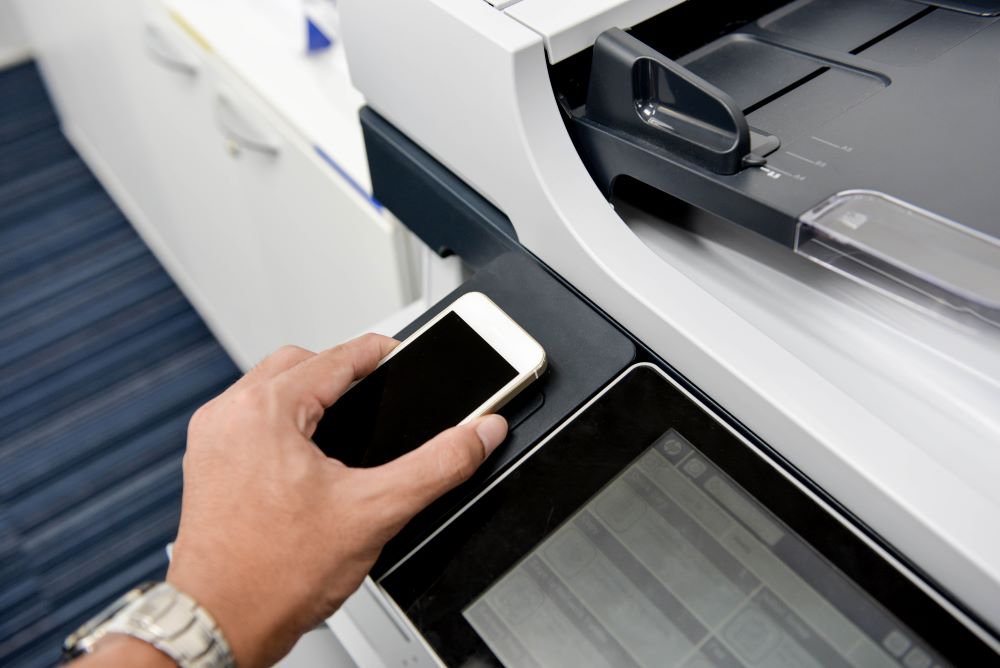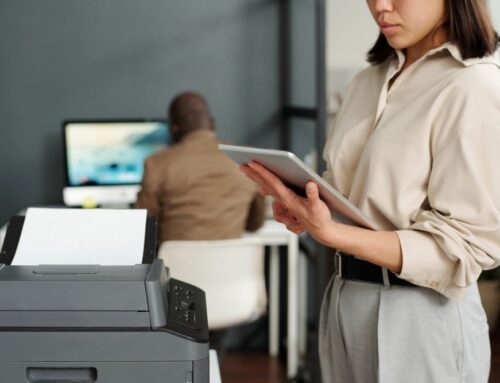Print is by no means dead. Countless offices across the globe depend on print to help maintain critical workflows and complete a wide variety of business tasks. The devices they use include multifunction printers.
However, they’re not immune to the dangers that face other connected technologies, especially in today’s age of cyberattacks. Hackers can just as easily breach a multifunction printer as they can ransack computers and cloud storage. For IT staff, increasing multifunction printer security through the use of best practices is an absolute priority.
Threats Multifunction Printers Pose for Businesses
You wouldn’t think that something as seemingly simple as a multifunction printer could prove just as vulnerable to hackers as an ordinary computer. But today’s printers are far more technologically advanced than even computers of a decade ago. Many multifunction printers even have the same storage and memory capabilities as your typical computer.
There’s also the fact that nearly every multifunction printer today boasts advanced networking capabilities, with wireless connectivity being the most notable. Wireless networks are especially vulnerable to hackers and other malicious users, making them a preferred vector for security breaches.
To demonstrate how vulnerable wireless-enabled multifunction printers are, a research team selected a sample of around 50,000 networked printers through custom tools and scripts and successfully infiltrated over 28,000 of them. That demonstrated just how much of a threat a poorly secured multifunction printer poses for the average business.
Some of the security dangers involving these devices include:
- Unauthorized changes resulting in rerouted print jobs
- Manipulated print jobs, including altered print content and altered print logs
- Accessing print data through the memory and hard drives of decommissioned equipment
- Using printers as a launchpad for denial-of-service attacks and other actions via malicious code
But it’s not just external threats that make multifunction printers vulnerable. Unauthorized access to print data and printed materials can also happen internally. It’s not unusual for malicious actors to simply walk over to a printer and take documents they wouldn’t ordinarily have access to.
Standard Security Best Practices for Your Multifunction Printer
Safeguarding your multifunction printer against cybersecurity threats isn’t as hard as you think. All it takes is adopting some basic best practices while staying vigilant against the latest risks. It´s worth noting that the first three best practices outlined below are the bare minimum for protecting your networked printers.
Change Your Default Password
This is one area where countless businesses fail regarding their security. Almost anyone can find default passwords for many multifunction printers, which means nearly anyone can compromise your office devices as long as those passwords exist. Changing your default password to something that only you and other authorized users know should always be the first step towards making your multifunction printers more secure.
Enact Password-Enforced User Restrictions
The more users you allow to access your multifunction printer, the more likely hackers and other malicious actors will gain unauthorized entry to your devices and data. Implementing user access restrictions ensure that only authorized users have access to your devices. In addition, these access restrictions also make it easier for administrators to track usage and limit exposure to data breaches.
Invest in Regular Printer Software Updates
Smartphones and computers aren’t the only devices that need regular software and firmware updates. Unfortunately, it’s easy for administrators and IT staff to overlook these updates, which in turn leaves multifunction printers more vulnerable to cybersecurity threats. Make sure that updates and patches are applied at the earliest opportunity.
Noteworthy Advanced Security Best Practices to Implement
We’ve highlighted the most basic steps towards improving security for your multifunction printer above. However, those steps aren’t enough to shield your office equipment from the latest cybersecurity dangers. You’ll also want to take the following measures to further safeguard your multifunction printer and, in turn, protect your network and other devices from malicious actors:
Employ Pull Printing
Unattended documents are always at risk of being stolen or otherwise compromised by unauthorized users. Pull printing prevents this by holding those print jobs on the server until the user physically arrives at the printer. Then, they can release the print job using their credentials, whether it be a password or card access. Pull printing ensures that sensitive and confidential documents remain secure. It also cuts down on waste by preventing documents from being unnecessarily discarded.
Use Hard Drive Encryption
You’d be amazed at how much valuable data a multifunction printer’s hard drive can hold. Hackers are just as aware, making hard drives a tempting target, especially if the multifunction printer is ever sold, disposed of or even stolen. Hard drive encryption prevents unauthorized parties from accessing your printer data. Some multifunction printers go a step further by incorporating password protection at the BIOS level, preventing your data from ever being retrieved even if the hard drive is physically removed from the device.
Employ Automatic Data Cleanup
Leftover data from previous print jobs can be a goldmine for hackers and data thieves. An automatic data cleanup feature ensures that this data is completely deleted from the multifunction printer in a timely manner, thus reducing the likelihood of data breaches and other security risks.
Utilize Automatic Temporary Image Removal
Temporary image files come in handy whenever there’s a power outage or if someone accidentally deletes important data and needs to retrieve it. But this feature also poses a significant security risk. Just imagine if someone were to use this very feature to grab confidential or sensitive data. Automatic temporary image removal ensures this data is erased promptly. Administrators can set specific storage periods for temporary files and deletion routines once that time expires.
Businesses can never be too careful when protecting their data from bad actors. Implementing these and other best practices will give your business the upper hand in the never ending battle against cyberattacks. If you’re interested in improving your Winston-Salem business’s multifunction printer security, we can help. Contact Kelly Office Solutions today for more information.






Leave A Comment
You must be logged in to post a comment.